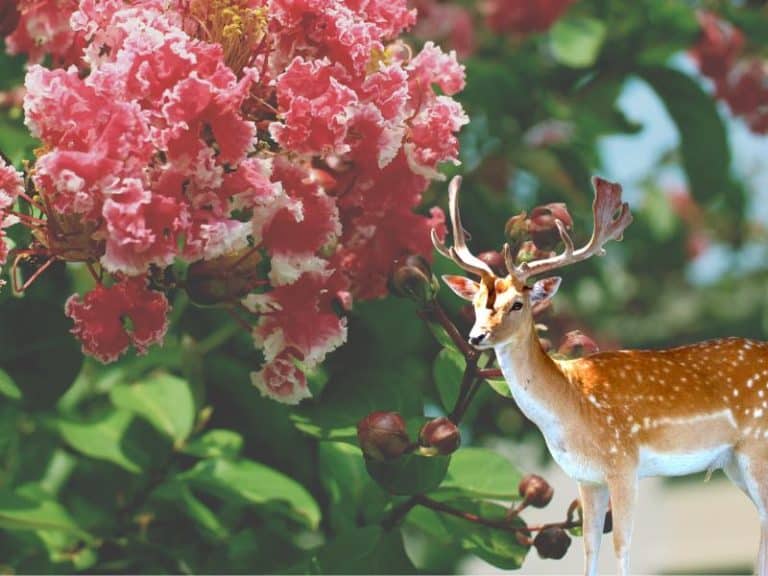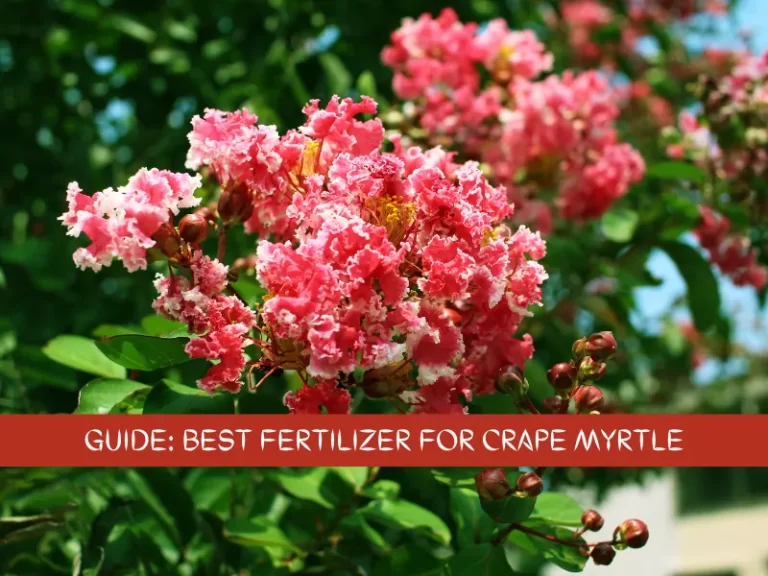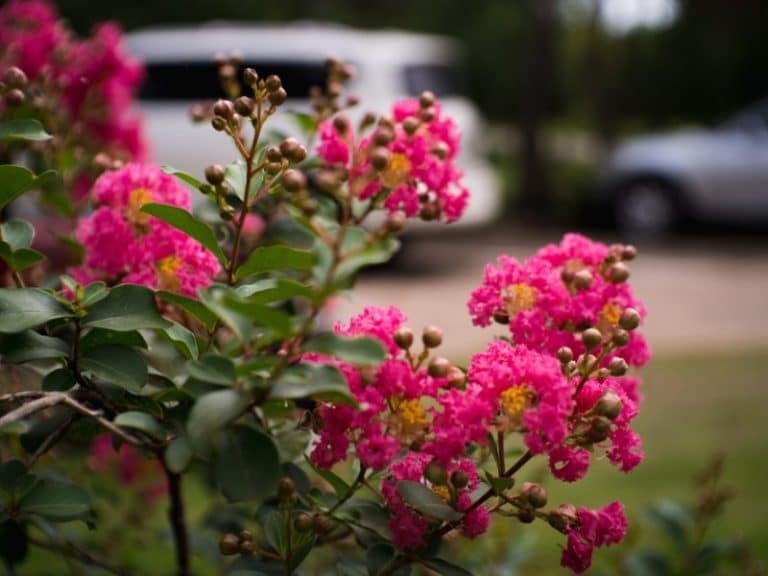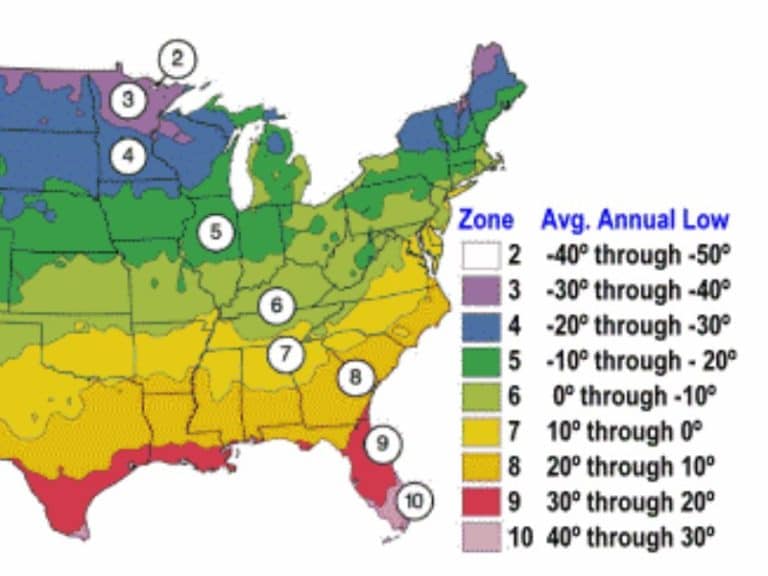9 Best Crape Myrtle Alternatives (Similar Trees)
Crape myrtle is beloved for its beautiful flowers and ability to be grown either as a tree or shrub. However, it falls short in shade tolerance, pest and disease resistance, and other aspects. You may, therefore, prefer a tree similar to crape myrtle in some ways but also improves upon its shortcomings.
The best alternatives to crape myrtle include dogwood tree, prairifire flowering crabapple tree, fringe tree, chaste tree, western redbud, fragrant tea olive tree, Chinese parasol tree, the red buckeye tree, and the weeping bottlebrush tree.
Best crape myrtle alternatives
The best alternatives to crape myrtle share some desirable qualities while being better in other aspects. Here are trees that make great alternatives for crape myrtles:
1. Red buckeye tree
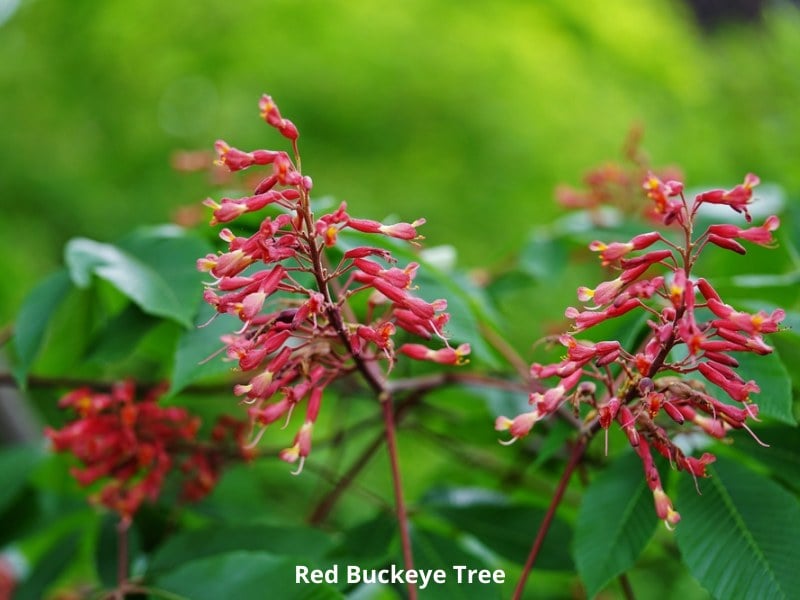
The red buckeye tree is a good choice if you’re looking for a tree whose blooms are as vibrant as crape myrtle blooms, but with better shade tolerance. Native to the southern regions of the United States, this tree only needs up to four hours of uninterrupted sunshine per day.
The red buckeye tree also allows for diversity, as it can be grown either as a shrub or as a tree. This ornamental tree thrives in USDA hardiness zones 6-9.
| Name(s) | Red buckeye tree |
| Height | 10-20 feet |
| pH | Prefers acidic soil |
| Soil type | Thrives in well-draining, moist soil |
| Blooms (color; season) | Deep red flowers produced in spring (April-May) |
| Water needs | Water at least weekly |
2. Chaste tree
Like crape myrtle, you can get two flowering cycles in the same season on the chaste tree if you prune the flowers before they seed. This mint-family shrub produces purple blooms that add a colorful touch to lawns and backyard gardens.
Native to China, the chaste tree has some medicinal benefits. The flowers are pressed to extract essential oils for aromatherapy. Chaste trees thrive in USDA hardiness zones 7-9.
| Name(s) | Chaste tree |
| Height | 6-25 feet |
| pH | 6.0-7.0 |
| Soil type | Loose, well-draining soil |
| Blooms (color; season) | Purple flowers appear from mid-summer |
| Water needs | Weekly in the summer and every 3-4 weeks in the winter |
3. Dogwood tree
Dogwood is a great choice if you’re in the northern regions looking for a more cold-hardy alternative to crape myrtle. These trees can handle mild frost and snow, and will only struggle once temperatures drop below -15 degrees Fahrenheit.
Also, like crape myrtle, dogwood trees range from bush to tree varieties. Their white or pink flowers also make them a beautiful landscape ornamental.
| Name(s) | Dogwood tree |
| Height | 15-40 feet, depending on sunlight exposure levels |
| pH | 5.5-6.0 |
| Soil type | Well-drained, slightly acidic soil |
| Blooms (color; season) | Taupe white mixed with pink; blooms appear from spring-summer |
| Water needs | Once a week, 6 inches deep |
4. Prairifire flowering crabapple tree
The Prairifire flowering crabapple is a flowering tree that’s more disease resistant than crape myrtle. Crape myrtle is vulnerable to mildew and leaf spot diseases. However, these two trees are quite similar as they both prefer uninterrupted sunlight and have showy blooms.
Prairifire flowering crabapple can also be a pollinating partner to apple trees whose blooms are of a similar color. This crabapple variety thrives in USDA hardiness zones 3-8.
| Name(s) | Prairifire flowering crabapple |
| Height | 20 feet at full maturity |
| pH | 5.0-7.0 |
| Soil type | Tolerates a wide range of soil conditions, from sandy to compact clay soil |
| Blooms (color; season) | Dark pink-red flowers produced in April and May |
| Water needs | Moderate, water once weekly |
5. Weeping bottlebrush tree
At full maturity, the weeping bottlebrush tree can reach a canopy spread of 15 feet, like crape myrtle. However, its drooping branches add a visual flair arguably more eccentric than crape myrtle.
The weeping bottlebrush tree has good tolerance for arid conditions and only needs to be watered twice a month during the hottest months. This evergreen tree is also well-adapted to frosty and windy weather conditions.
| Name(s) | Weeping bottlebrush tree |
| Height | 20-30 feet |
| pH | 5.6-7.5 |
| Soil type | Silt or loamy soil |
| Blooms (color; season) | Red flowers appear in the spring season |
| Water needs | Bi-monthly during the hottest months of the year |
6. Fragrant tea olive tree
Fragrant tea olive tree matches crape myrtle in withstanding heavy pruning. Yet, it beats crape myrtle in tolerance for clay soils. Therefore, consider fragrant tea olive tree over crape myrtle if your yard has clay soil.
Fragrant tea olive tree has a welcoming fragrance that captures your senses. This plant prefers full sunlight and tolerates a wide Ph range of 5.0-7.5. Fragrant tea olive tree also boasts good drought-hardiness once established.
| Name(s) | Fragrant tea olive tree |
| Height | Typically reaches between 10-20 feet at full maturity |
| pH | 5.0-7.5 |
| Soil type | Thrives in moist, well-draining soil |
| Blooms (color; season) | Creamy white blooms are produced in the spring season |
| Water needs | Requires at least one inch of water every week |
7. Fringe tree
Unlike crape myrtle that’s vulnerable to pests such as aphids and whiteflies, the fringe tree is pest-resistant. It grows between 12 and 20 feet long, about the same height range for crape myrtle. Fringe trees produce showy white blooms from spring to summer.
Native to North America, Fringe trees prefer moist, well-draining soil conditions. This plant has great regional diversity, as it can grow in all the USDA hardiness zones.
| Name(s) | Fringe tree |
| Height | Reaches 12-20 feet when mature |
| pH | 6.0-6.5 |
| Soil type | Thrives in clay and loamy soil |
| Blooms (color; season) | Produces fleecy white flowers from late spring |
| Water needs | Has moderate water needs and should only be watered once per week. You can water twice weekly in scorching conditions. |
8. Western redbud
Western redbud is the best choice if you’re looking for a tree with showy blossoms like crape myrtle but blooms earlier in the season. This ornamental tree produces vividly-colored magenta flowers from late winter to early May. Also, it doesn’t get browsed by deer, like crape myrtle.
This deciduous shrub is relatively low-maintenance and requires little watering provided that it’s grown in a place with good soil drainage. Western Redbud also provides great shade with a dense canopy of 15-20 feet.
| Name(s) | Western redbud |
| Height | Can reach 10-20 feet when fully mature |
| pH | Tolerates both alkaline and acidic soil conditions, with a Ph range of 5.5-8.0 |
| Soil type | Thrives in well-draining soil, but will tolerate clay soil |
| Blooms (color; season) | Magenta-bright pink flowers appear from March-May |
| Water needs | An extremely drought-hardy plant with low water needs. Water only to a depth of 1 inch per month. |
9. Chinese parasol tree
The Chinese parasol tree has a multiple-trunk shape like crape myrtle. It has a wider spread that provides better shade. The Chinese parasol tree has a spread of 15-20 feet, while crape myrtle has a spread of 6-15 feet at maturity.
The Chinese parasol tree tolerates a wide range of soil conditions and will grow in both acidic and clay soil conditions. This deciduous tree produces attractive yellow-green panicles in the summer.
| Name(s) | Chinese parasol tree |
| Height | Can reach heights of 35-50 feet |
| pH | 4.5 – 6.5 |
| Soil type | Well-draining soil (but will still grow in clay soil) |
| Blooms (color; season) | Yellow-green/ greenish-white blossoms appear from early summer |
| Water needs | Prefers moist soil but will survive semi-arid conditions. Provide 1 inch of water per week for the first couple of years after planting. |
Why do people not like crape myrtles?
Some people may not fully embrace the idea of growing crape myrtles. One of the major reasons is their reseeding ability. They are an Indian native that reseeds fast and could potentially take over an area. For that reason, some people consider it invasive.
Also, the tree has sugary secretions that attract aphids. You’re likely to see aphids when the leaves unfurl. And with aphids, come spiders. While it’s a resilient tree, it is vulnerable to pests and diseases due to the mold that comes with the sugary secretions.
Other reasons people don’t like crape myrtles include:
- Crape myrtles use a lot of space to grow.
- Poor shade tolerance
- Spring dieback if the weather is cold
References
- University of Rochester- Medical Center: Chaste Tree (Chasteberry)
- North Carolina State University (NCSU): Osmanthus fragrans


